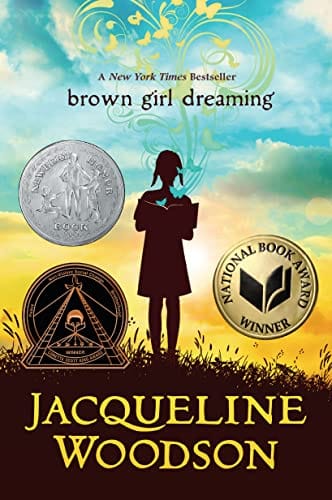Brown Girl Dreaming: An Inspiring Verse Memoir for Every Generation
Discover Brown Girl Dreaming with a concise summary, analysis of themes like identity and civil rights, plus teaching tips for educators and parents.

Introduction
Since its publication in 2014, Brown Girl Dreaming by Jacqueline Woodson has captivated young and adult readers alike. The National Book Award–winning verse memoir traces Woodson’s childhood in South Carolina and New York during the turbulent 1960s and 1970s, weaving personal memories with the broader tapestry of the civil rights movement. Through spare, lyrical poems, the author explores race, family, faith, and the power of storytelling. This article offers a concise summary, thematic analysis, and practical teaching ideas to help you unlock the full impact of Woodson’s celebrated work.
Plot Summary
The memoir opens with Woodson’s birth in Columbus, Ohio, in 1963. Soon after, her parents separate, and Jacqueline, her siblings, and their mother move to her maternal grandparents’ home in Greenville, South Carolina. Life in the segregated South is slow-paced, filled with porch conversations, church songs, and the comforting scent of her grandmother’s pine-dust floor cleaner. Yet the children also feel the sting of Jim Crow laws and the constant reminders of what they cannot do.
When Jacqueline is seven, the family relocates to Brooklyn, New York. The city offers fresh possibilities—vibrant neighborhoods, multicultural friendships, and images of Afro-centric pride—but it also poses challenges such as crowded schools and her mother’s long work hours. Through it all, Jacqueline learns to navigate two homes, two accents, and two versions of America. By the memoir’s end, she has discovered her own writer’s voice, one that will later speak to millions around the world.
Key Themes
Identity and Voice
At its core, Brown Girl Dreaming is a coming-of-age story about claiming an identity. In poem after poem, young Jacqueline wrestles with questions of who she is and where she belongs. She is a Southern girl who loves collards and red dirt, yet she is also a Brooklyn girl who adores double-Dutch on asphalt playgrounds. Writing becomes the bridge between these two worlds, allowing her to stitch together a multifaceted self. Woodson’s journey reminds readers that identity is not static; it evolves through place, language, and personal choice.
Civil Rights History
The civil rights movement provides a powerful historical backdrop. References to Martin Luther King Jr., lunch-counter sit-ins, and Malcolm X frame Jacqueline’s childhood within a national struggle for equality. Rather than recounting famous marches in detail, Woodson focuses on how sweeping political change ripples through ordinary lives—whether it is her grandmother’s quiet dignity or her mother’s insistence that her children “hold your head up” in the face of discrimination. This ground-level perspective makes the history resonate with contemporary readers who continue to grapple with social injustice.
Family and Memory
Family stands at the heart of the memoir. Woodson paints vivid portraits of her stern but loving grandfather, her devout Jehovah’s Witness grandmother, her determined mother, and her imaginative siblings. Each relative’s voice echoes through the poems, demonstrating how communal memory shapes personal identity. Moments such as snapping green beans on the porch or telling stories beneath a Brooklyn window illustrate how everyday rituals become sacred bonds. The memoir also honors departed relatives, showing that remembering is an act of resistance against erasure.
Jacqueline Woodson’s Lyrical Style
Written entirely in free verse, Brown Girl Dreaming reads like a series of intimate snapshots. Woodson’s language is economical yet evocative; a single line—“the scent of pine-sol and biscuits”—can summon an entire house. Repetition, enjambment, and strategic white space invite readers to pause and feel the weight of each memory. The result is a text that is accessible to reluctant readers while providing ample depth for literary analysis. Teachers often pair the memoir with lessons on poetic devices, demonstrating how form amplifies meaning.
Why Brown Girl Dreaming Resonates with Readers
Beyond its historical significance, the memoir resonates because it presents a universal longing: the desire to be seen and heard. Readers from diverse backgrounds relate to Jacqueline’s fear of standing in front of the class, her thrill at hearing her first story praised, and her hope that words can change the world. The book also fills a crucial gap in children’s literature by centering a young Black girl’s perspective without resorting to stereotypes. Its authenticity fosters empathy, encouraging readers to value voices that have been historically marginalized.
Using the Book in the Classroom
Brown Girl Dreaming is a versatile resource for educators across grade levels. In language arts, students can analyze how Woodson employs imagery, rhythm, and repetition to evoke mood. Social studies classes might pair the memoir with primary sources on the Freedom Riders or the Black Panther movement, deepening understanding of civil rights history. Because the text is written in verse, it also supports fluency practice; students can perform selected poems as reader’s theater to build confidence.
For writing workshops, teachers can invite learners to craft their own verse memoirs, using sensory details to capture a childhood memory. Additionally, the book encourages rich discussions around code-switching, migration, and the concept of “home.” Educators should prepare for sensitive conversations about racism and identity by establishing respectful guidelines and providing supplementary materials that celebrate cultural diversity.
Conclusion
Jacqueline Woodson’s Brown Girl Dreaming is more than a memoir; it is a lyrical testament to resilience, creativity, and the enduring power of words. Through her poetic reflections on family, history, and self-discovery, Woodson invites readers to honor their own stories and to listen closely to the dreams of others. Whether you are a teacher looking for an engaging text, a parent seeking diverse books for your child, or a literature lover exploring contemporary classics, Brown Girl Dreaming delivers an unforgettable reading experience that will linger long after the final poem.



